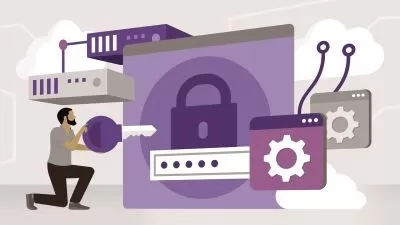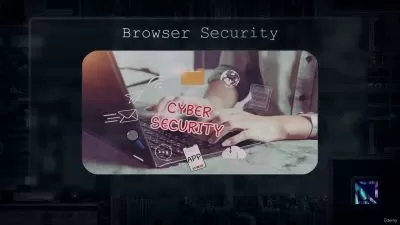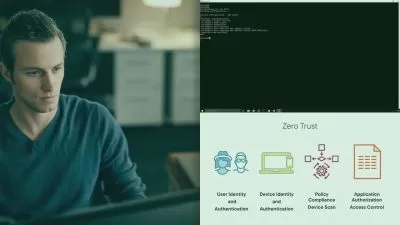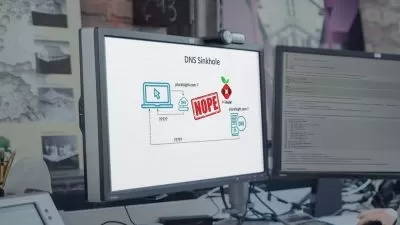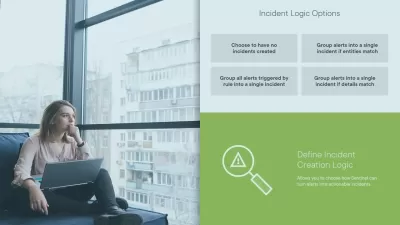GIAC Security Essentials (GSEC) Online Training
Erik Choron
25:28:36
Description
This intermediate GIAC Security Essentials training prepares security professionals to take the GSEC exam, which is the one required exam to earn the Security Essentials certification.
The Global Information Assurance Certification is an industry credential IT professionals earn to prove that they’re technically proficient in a specialized field. The GIAC Security Essentials is a broad certification that proves a security professional understands the theory of protecting large networks – but more importantly, it’s a certification that shows they’re proficient in the real-world skills necessary to keep it safe.
More details
The GSEC covers tons of different topics, tools and vendors. This GSEC course readies you with a wide set of skills and knowledge that the most advanced security professionals rely on.
For managers with GIAC products, this GIAC training can be used for GSEC exam prep, onboarding new security professionals, individual or team training plans, or as a GIAC reference resource.
Security Essentials: What You Need to Know
This Security Essentials training has videos that cover topics such as:
- Physical security controls that stop attacks before they begin
- Interacting with and securing cloud-based network instances
- Maintaining data security with secured containers
- Architecting a network that can be monitored effectively
- Reading, managing and understanding network logs
Who Should Take Security Essentials Training?
This Security Essentials training is considered professional-level GIAC training, which means it was designed for security professionals. This cybersecurity skills course is designed for security professionals with three to five years of experience with securing enterprise networks.
New or aspiring security professionals. If you’re a brand new cybersecurity professional, this GSEC course is an advanced and challenging step in your career. This course covers active defense topics, physical security, cryptography, vulnerability scanning, and much more. If you want to go from a novice to an advanced security expert, this GSEC training is the fast-track to getting there.
Experienced security professionals. The GSEC is a great certification for cybersecurity professionals with a few years of experience, and this GSEC course will show you everything you need to succeed. Because the GSEC exam covers tons of different technologies and tools for securing enterprise networks, even the most experienced cybersecurity professionals should take this GSEC training so that they understand what will be on the exam.
User Reviews
Rating
Erik Choron
Instructor's CoursesOnline training allows for the flexibility to learn or better a skill within a timeline and remote environment — that doesn't take away from work or family.
Erik brings over 20 years of IT experience to his training. He holds nearly 20 IT certifications, the majority of which focus on cybersecurity. Prior to joining CBT Nuggets, he served as a First Sergeant in the U.S. Army. His interest in tech and eventually IT was spurred after receiving a 486 computer from his grandfather and learning Basic and Pascal. When Erik isn't creating training videos, he enjoys spending time with his family, going to professional wrestling events, and doing mechanical work.
Certifications: Certifications: Certified Ethical Hacker, GIAC Continuous Monitoring Certification (GMON), GIAC Systems and Network Auditor (GSNA), GIAC Critical Controls Certification (GCCC),GIAC Certified Intrusion Analyst (GCIA) - Gold, GIAC Certified Incident Handler (GCIH), GIAC Certified Enterprise Defender (GCED), GIAC Security Essentials (GSEC), Microsoft MCSA: Server 2012, CompTIA Security+, CompTIA Cloud+, CompTIA A+, PMI® Project Management Professional (PMP)
Areas of expertise: Digital forensics and cyber defense
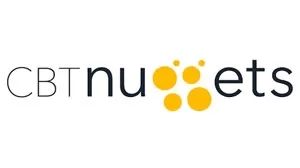
CBT Nuggets
View courses CBT Nuggets- language english
- Training sessions 186
- duration 25:28:36
- Release Date 2023/05/17






